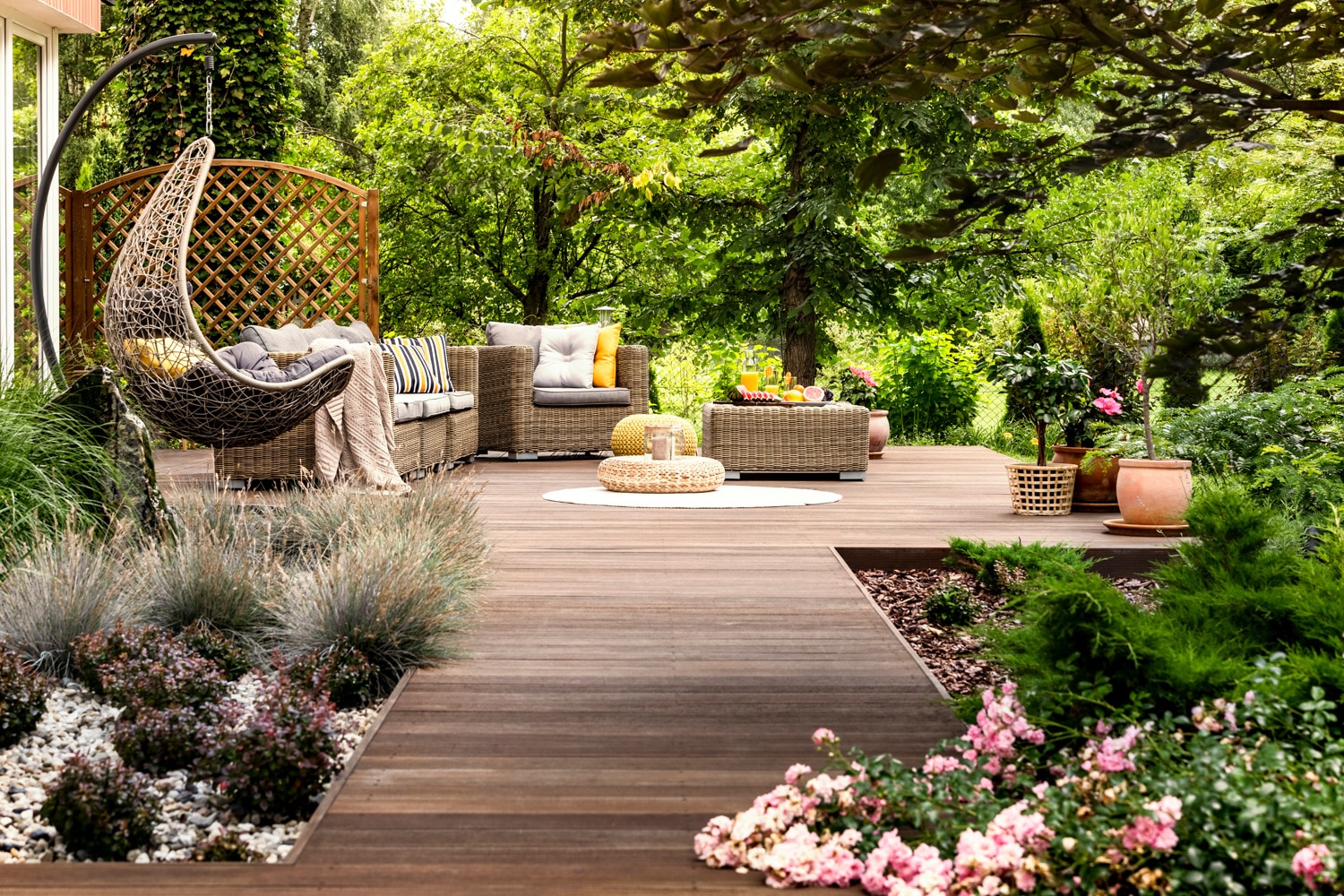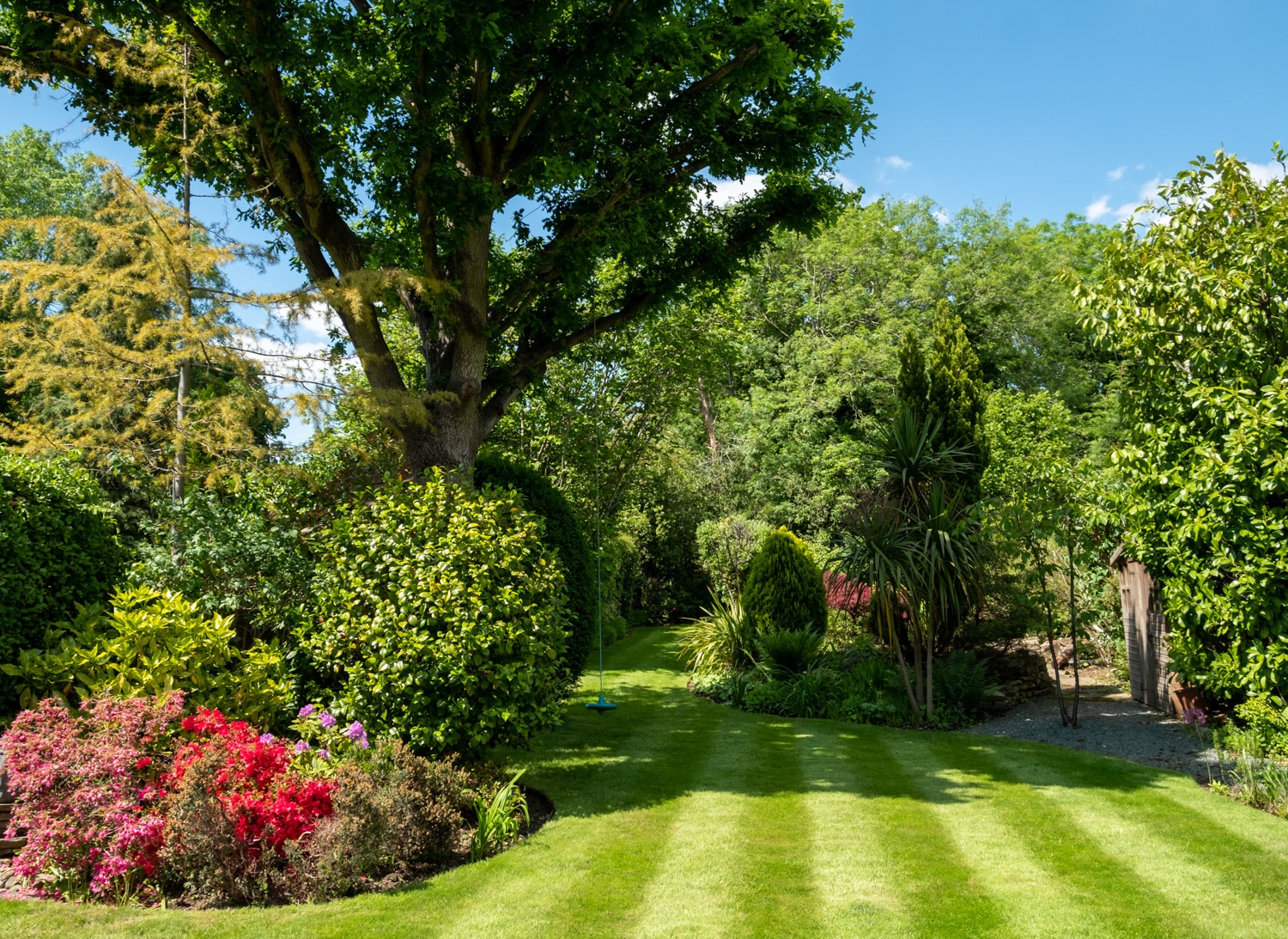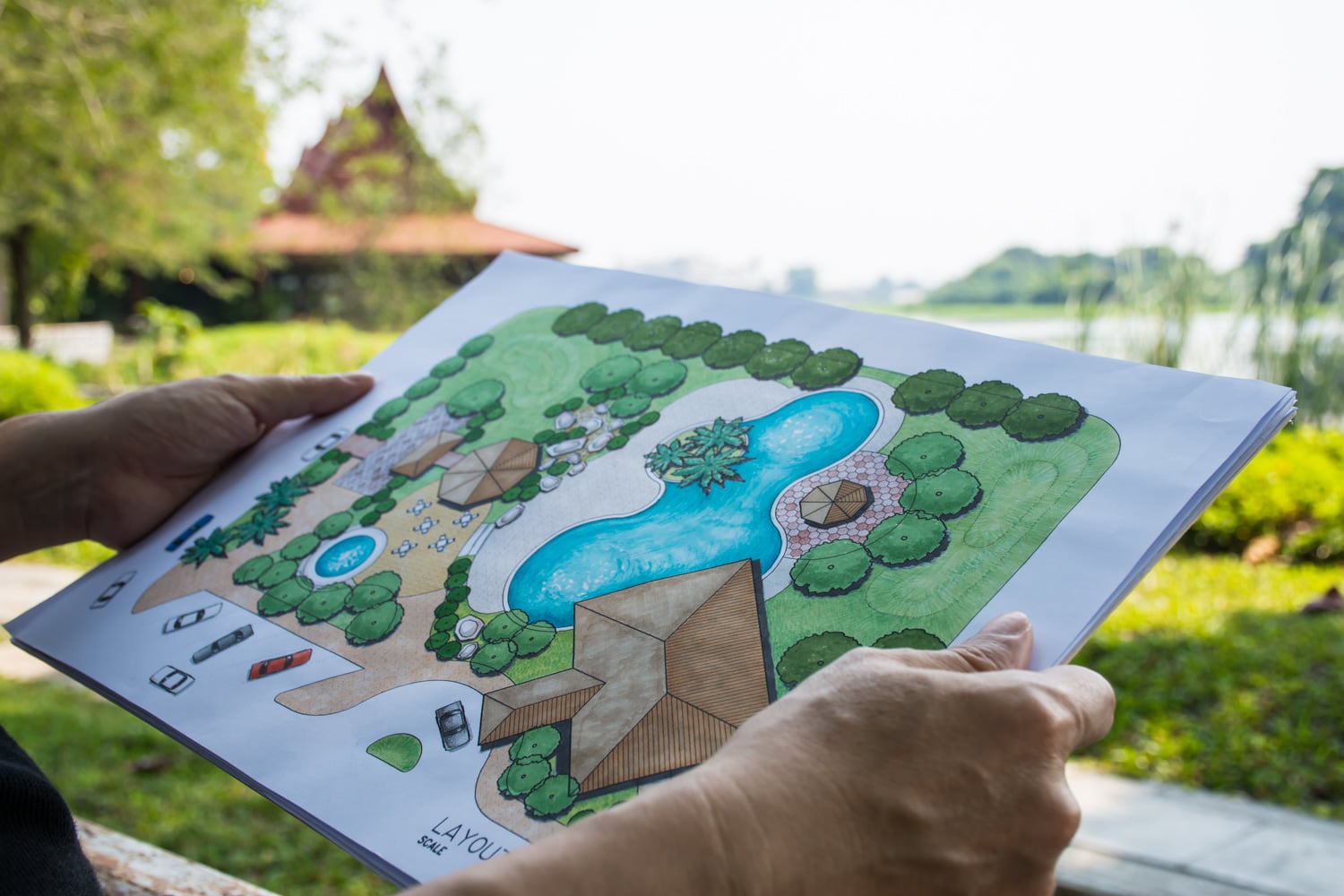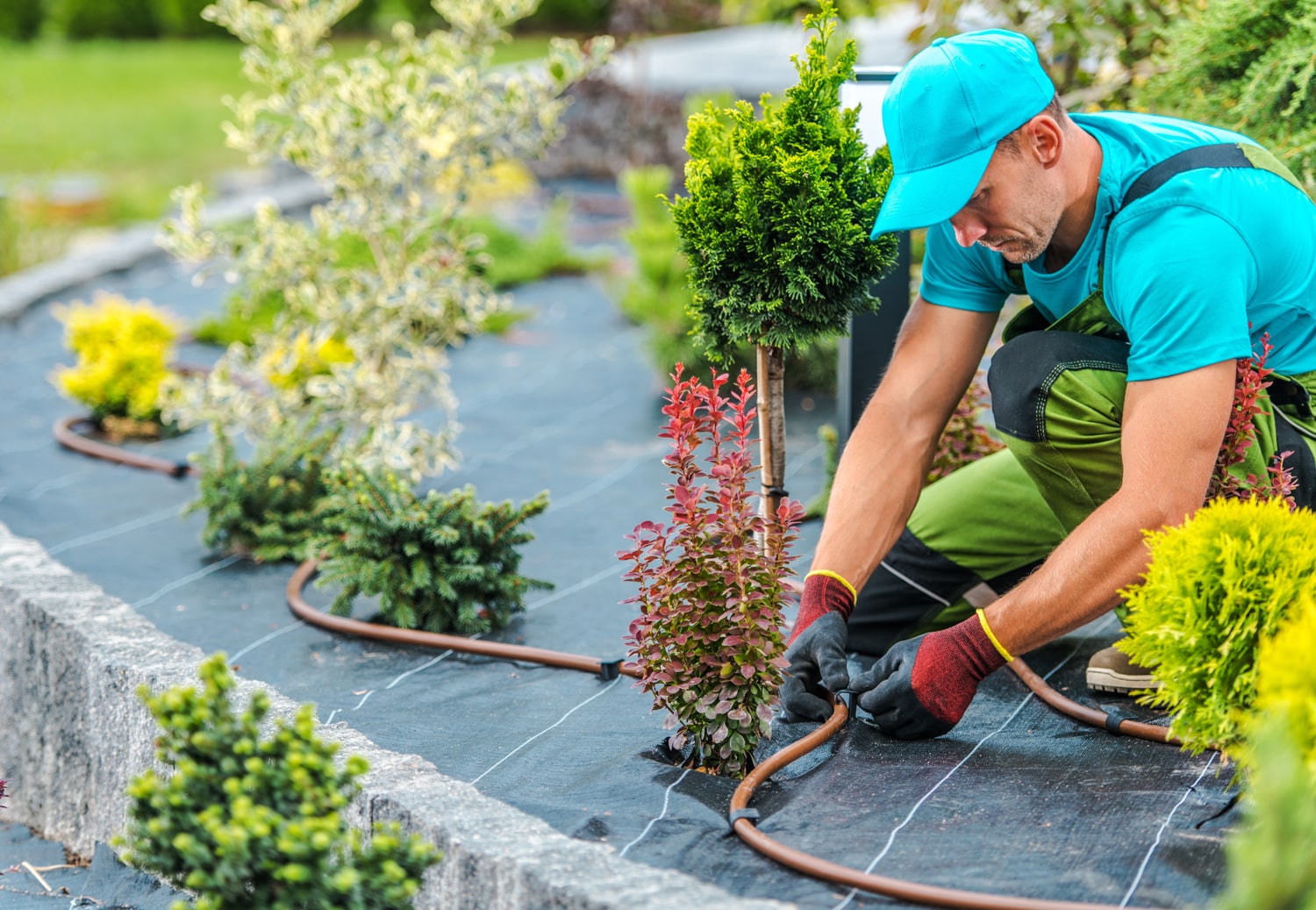As autumn is well and truly with us now, our gardening guru Tim Sykes reveals why now is the perfect time to get planning your garden for spring
It’s October and I’m sure for most of us nothing could be further from our minds than 2023 and our garden plans. But, if you consider yourself a good planner, this time of year is actually a great opportunity to gather your thoughts.
It’s also the best time to engage a designer and line up contractors if your aim is to enjoy a new garden by summer 2023.
Whether you are contemplating some planting improvements, or something more radical, it’s best to chat through your ideas with a professional.
Luckily Tunbridge Wells is well catered for when it comes to talented designers. A good starting point is a Google search – try putting in key words such as ‘Garden Design’, or ‘Garden Designers Tunbridge Wells’. Or ask for personal recommendations from friends who’ve recently undergone a similar garden design project.
There are all types of catalysts for change outside. Sometimes it’s a house extension, or refurbishment, sometimes it’s a new terrace, swimming pool or garden building. Often it’s just the desire to enjoy and utilise the space more effectively.
A planned approach with a garden designer is definitely the best route. It helps you look more objectively at your space, benefit from their specialist knowledge and creativity and provides a plan that can be easily interpreted and costed by a landscaper.
This, together with your brief, will deliver you a more cohesive and cost effective plan.
So how do you set yourself a brief?
- Your budget?
- Your circumstances?
- Your needs?
- Your environment?
- Your likes and dislikes?

The Budget
Very few clients ever offer up the budget. This maybe because many may not have appreciated what gardens cost to build and maintain, but possibly because they are fearful of divulging their real budget. It is really important to discuss some budget parameters at an early stage, as otherwise a lot of time and thought can go into a solution that may never see the light of day.
And do NOT believe the ridiculous sums referred to on television shows! Very often prices quoted do not include the labour, and no doubt other costs like equipment maybe subsidised, so it can be very misleading.
Building a garden is a bit like investing in a new kitchen, or indeed a new extension. It often involves the re-landscaping of land surrounding your house, the preparation to take new services and steps, and the creation of walls and terracing which apart from aesthetics are often load bearing. Apart from the labour costs, materials, equipment and plants all cost money.
There was an interesting campaign on Instagram recently by one of the UK’s top garden designers Andy Stedman. There is no precise science, and Andy is at the top of his profession, but he suggests smaller gardens between 100-250m2 cost in the region of £60,000+. Medium size gardens 500-1000m2, cost £90,000-£145,000. Whereas larger gardens 1000m2 – 5000m2, range between £145,000-£300,000. If you are lucky enough to have a property larger than this – say 10,000m2, then expect to invest £900,000 – £1.5m. All these prices can be greatly affected by the choice of materials and size of plants and trees you may specify. But it’s only a guide.
Interestingly our own rear garden is c800m2 and when we moved in nearly seven years ago it was a field. It now has new boundary fencing, terraces, herbaceous borders and a kitchen garden. All together we spent around £80,000 in 2015. At today’s commercial rates this would probably cost in the region of £150,000. So you definitely need to do some thorough research…
Whilst the aforemetioned figures might seem a little frightening, they are all inclusive and include labour, materials, plants, trellising, water features, electrics, machinery and of course VAT. But they don’t include high capital items like swimming pools, summer houses, greenhouses and other garden buildings. Smaller gardens will appear on a per sqm more expensive, but that’s because in many cases a disproportionate effort goes into making a smaller space work harder, or more soft landscaping appears on larger plots.
You need to discuss the budget with your designer and they will guide you further.
Your Circumstances
It is important for the designer to understand your circumstances and needs as a household.
For example:
- Do you live on your own?
- Are you a retired couple?
- Do you have young children?
- Pets?
- Are you active gardeners, or do you have busy careers, or other outside interests?
- Do you travel a lot and if so how might this impact the garden, could it be to do with the months you are home?

Your Needs
This is about how you plan to use the garden.
Here you can create your list of “must haves” and “like to haves”
- Is the garden primarily about having an entertaining space?
- Do you like barbecuing?
- Do you hanker after a fire pit?
- Do you need to create more peace and seclusion?
- Is it a place for your children to play?
- Must it be low maintenance?
- Is it your hobby?
- Do you want to grow herbs and vegetables?
- Is it important to have garden lighting?
- Do you want to integrate an irrigation system?
Your Environment
A great garden design works in harmony with the surrounding landscape.
Consider the style of your house and any improvements you may have made and how they physically impact on the garden and their aesthetics.
Consider the materials and colours that have been used in the building, in your boundary walls and pathways, in your new kitchen etc.
Take stock of the soil type, or ask your designer to check this out. Consider the plants and trees already in your garden as these may give a clue to plants that are more likely to flourish in any new scheme.
Consider the orientation of the garden and where the sunny spots are, and when in the day.

Likes and Dislikes
Knowing what you like, or dislike could save an awful lot of time and heartache! So be honest. If you really hate Tree Ferns, or Dahlias then say so. If your favourite colour is purple and pink is a no no, then let your designer know!
It’s worth noting the following points:
- Do you already have a vision for your garden?
- Are there particular planting styles you like?
- Are there colour schemes you like and dislike?
- Are there plants you dislike?
To help you and your designer further you may want to create your own mood board of gardens or features you like. An easy way to do this is to view one of the following websites:
You can search pretty much anything then screen grab scenes and features you like and pop these in a Powerpoint, or Word file for discussion.
Off line you could look at publications such as House & Garden, RHS The Garden, Homes & Gardens, Gardens Design Journal, The English Garden, or Gardens Illustrated.
So, armed with all this information you have an excellent starting point to create a magnificent garden in 2023!
For further information or help with designing your garden contact Tim Sykes at Gardenproud on 07725 173820, email him at reallygardenproud@btinternet.com, or google the Gardenproud website
What’s going on in the garden in October:
It’s Autumn. You’ll probably need to pop a jumper on as it will inevitably feel colder. But October is a lovely time as the trees change colour. We always start raking from day one and the leaves go into the compost. It can be frustrating as no sooner have you cleared one fall then it starts all over again!
- This month is also a very good time to prepare for the early frosts. So if you have less hardy plants in your garden consider getting the fleeces out.
- Cut back perennials that have died down.
- Divide any herbaceous perennials.
- If you haven’t already done it harvest any remaining apples, pears and grapes you may have growing in your garden.
- Start thinking about your last mow.
- Plant out your Spring Bulbs.








